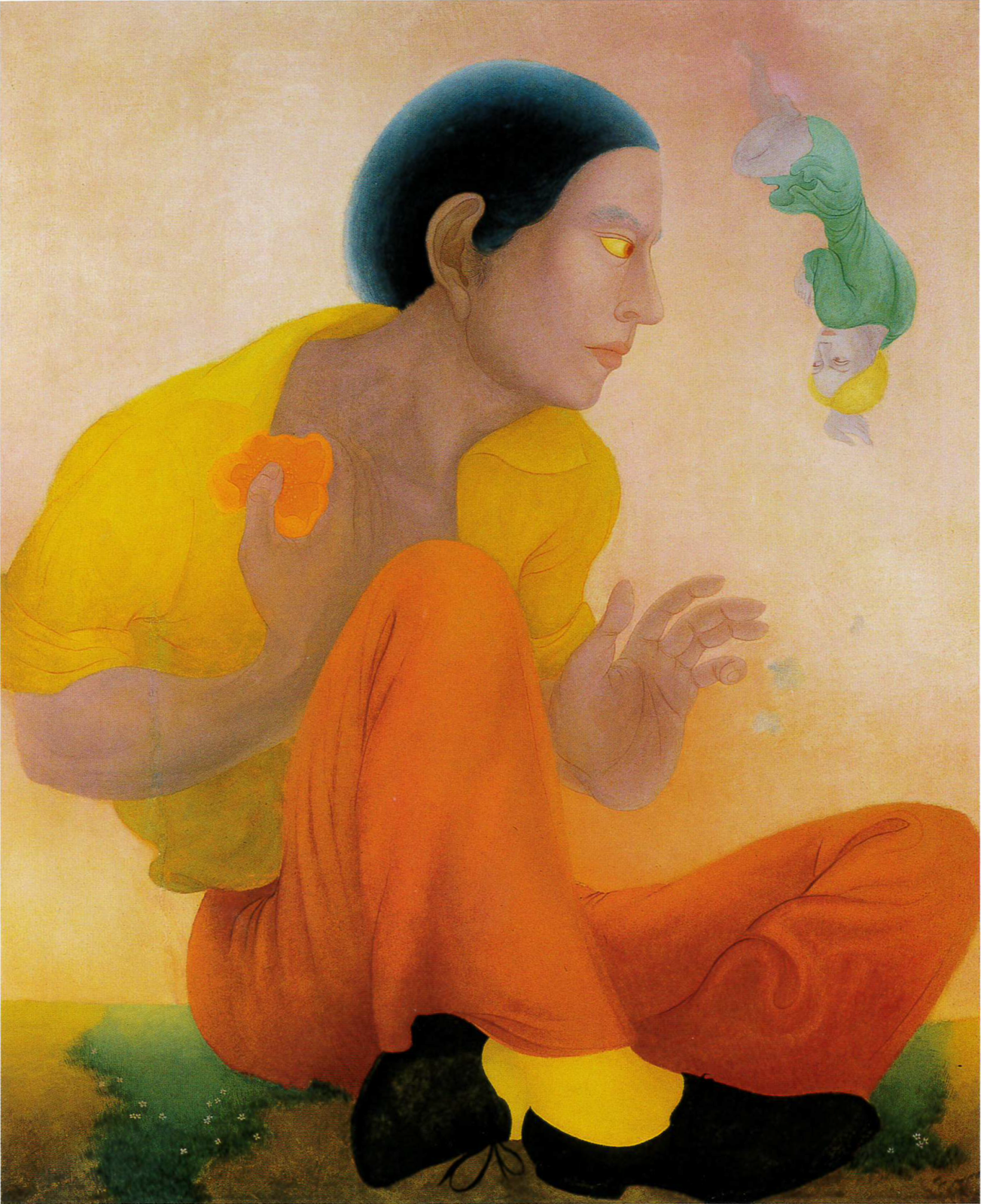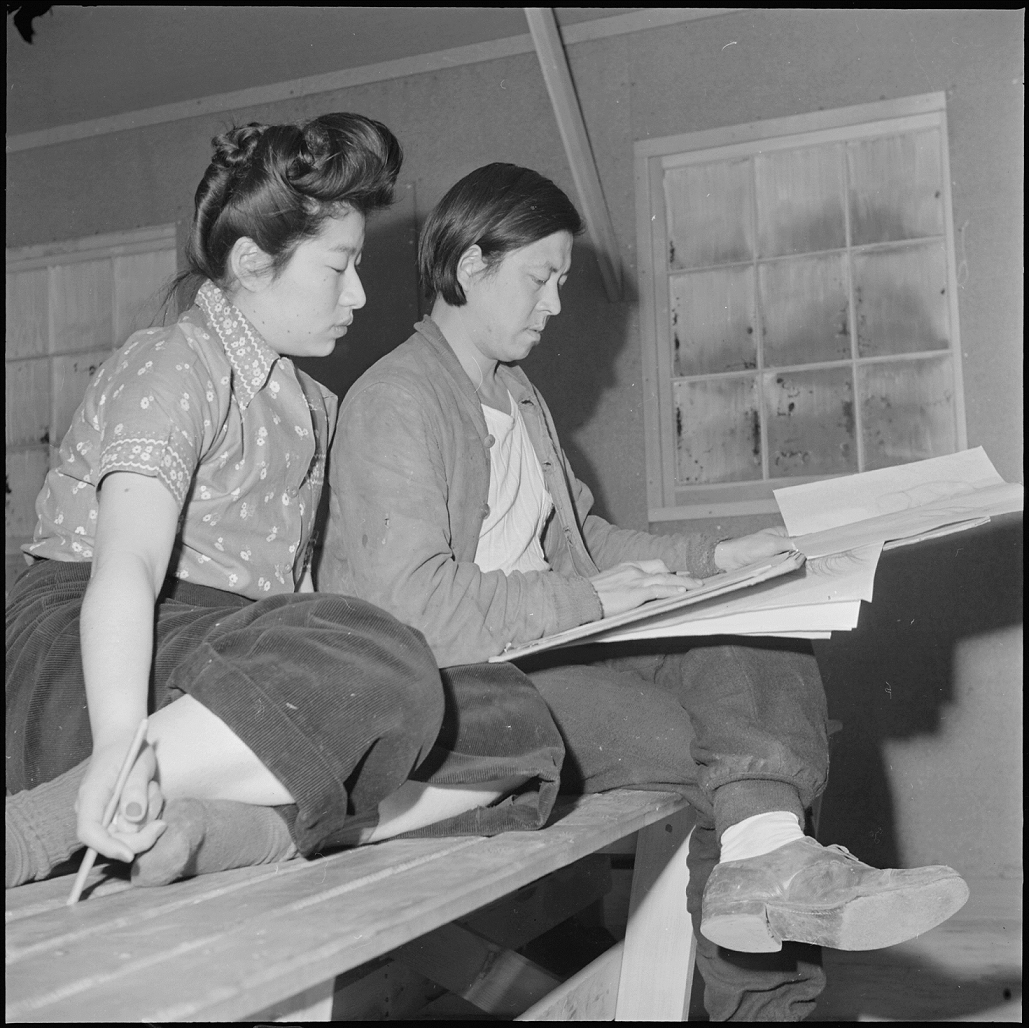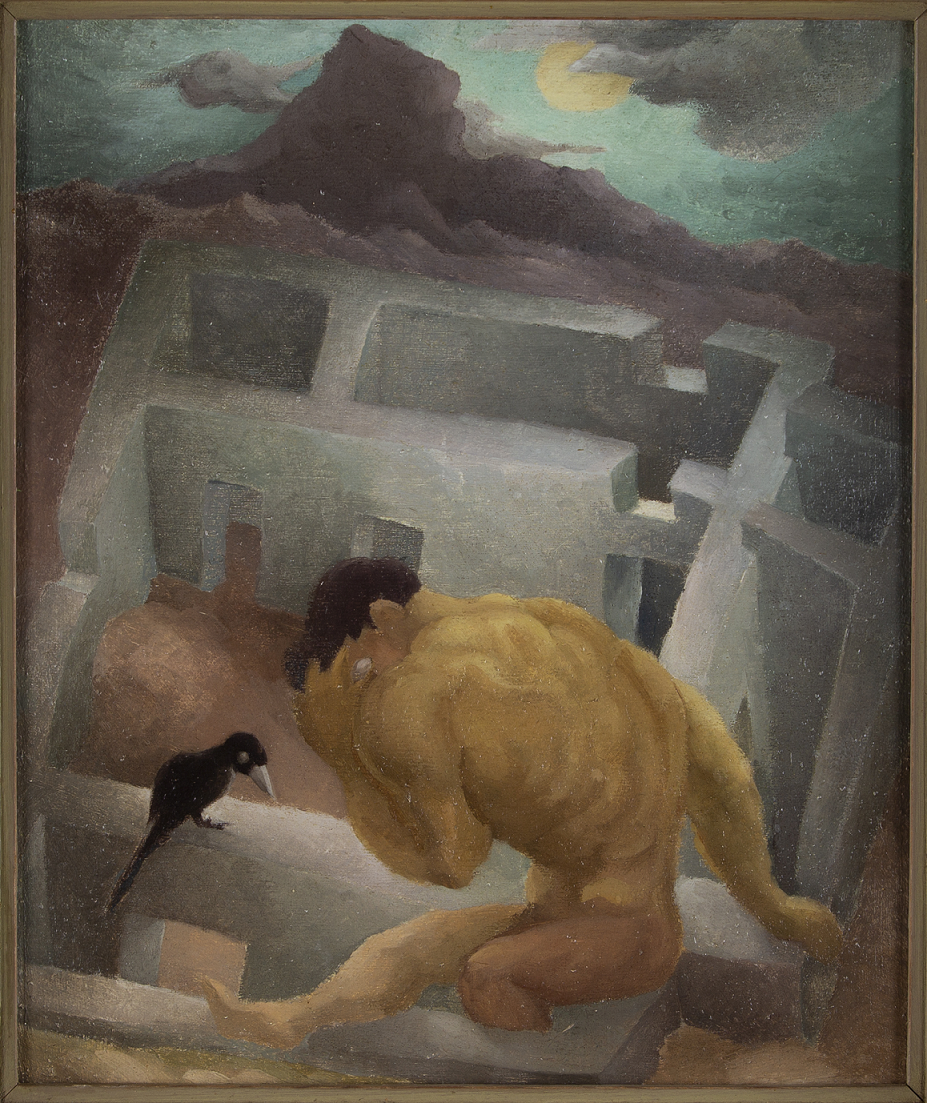Internment Camp Art Schools
by Karen Fang
Today, art and survival. The University of Houston presents this series about the machines that make our civilization run, and the people whose ingenuity created them.
During World War II, the mass internment of Japanese Americans caused considerable loss. In the few weeks that over a hundred thousand American residents were given to relocate, many homes, businesses, and valuable personal belongings were lost, many never to be recovered.
Though we don't often realize it, art was part of these casualties. By 1940, Japanese Americans played a major role in California's art scene, but the war destroyed this once dynamic creative community. A portrait painter favored by Hollywood stars had the bad luck of opening his first major solo exhibit on the same day as the bombing of Pearl Harbor. Another artist had to cut short a prestigious European scholarship, and several painters praised in the Los Angeles Times lost most or all of their prewar work in the scramble before internment.
These artists, like every other Japanese American forced into internment, arrived at the camps bereft. But as artists they also were fortunate in that they could transform the world around them. While nothing could replace their lost work or the interruption to their careers, many interned artists turned their tragedy into new kinds of artistic production.
One of these legacies are the art schools that the interned artists founded, to help raise the spirits of their fellow internees. At camps in Tanforan, California and Topaz, Utah, for example, volunteer teachers included an internationally celebrated woodblock artist and ink painter. At Manzanar, teenage Iwao Takamoto was encouraged to study animation. He later grew up to create the cartoon classic Scooby-Doo.
The camp art school in Heart Mountain, Wyoming was particularly impactful. That school was run by Benji Okubo, a charismatic colorist previously central to the Art Students League of Los Angeles. The Los Angeles Art League was known for experimental techniques and collegial support. Oscar-winning filmmaker John Huston, who studied there, credited the Art Students League as more instructive than any Hollywood apprenticeship.

Vision of the Blue Lily (Self Portrait by Benji Okubo, ca. 1930s).
Courtesy of Richard See.
But war had taken its toll, and by the time of internment the LA Art Students League was no longer in operation--except at Heart Mountain, where it was reconstituted by Benji Okubo. Benji himself was so traumatized by internment that he had all but stopped painting. Yet he threw himself into teaching, leading the internment camp through a curriculum directly imported from the Art Students League.

Benji Okubo teaching at Heart Mountain, November 1943.
From the National Archives, #539159.
Heart Mountain's art school might have been the very population that the federal government interned as potential enemies, but when no one else could maintain the Art Students League, it was these interned Japanese Americans who were the caretakers of this vibrant flame of American art.
After the war the Los Angeles Art League reopened, educating diverse students working in all kinds of media. They may not know it, but all LA Art League alumni are in some sense disciples of Benji Okubo and the artists of Japanese American internment. As the traditional Japanese proverb reminds us: ku wa raku no tane (苦は楽の種); suffering is the seed of fortune.

Untitled painting by Benji Okubo, ca. 1942-1945.
Courtesy of Japanese American National Museum (Gift of Chisato Okubo, 2003.159.6)
I'm Karen Fang, at the University of Houston, where we're interested in the way inventive minds work.
Michael D. Brown, Views from Asian California, 1920-1965: An Illustrated History. Michael D. Brown: San Francisco, CA, 1992.
Gordon H Chang, Mark Dean Johnson, and Paul J. Karlstrom, editors. Asian American Art: A History, 1850-1970. Stanford: Stanford University Press, 2008.
Will South, Marian Yoshiki-Kovinick, and Julia Armstrong-Totten. A Seed of Modernism: The Art Students League of Los Angeles, 1906-1953. Pasadena: Pasadena Museum of Art, 2008.
The View from Within: Japanese American Art from the Internment Camps, 1942-1945. Los Angeles: Japanese American National Museum, UCLA Wight Art Gallery, and UCLA Asian American Studies Center, 1992.
Marian Yoshiki-Kovinick. "The Art Students League of Los Angeles: A Japanese American Connection." In A Seed of Modernism: The Art Students League of Los Angeles, 1906-1953. By Will South, Marian Yoshiki-Kovinick, and Julia Armstrong-Totten. Pasadena: Pasadena Museum of Art, 2008.
Thanks to Reed Stevenson for the Japanese epigram.
This episode was first aired on December 10, 2019